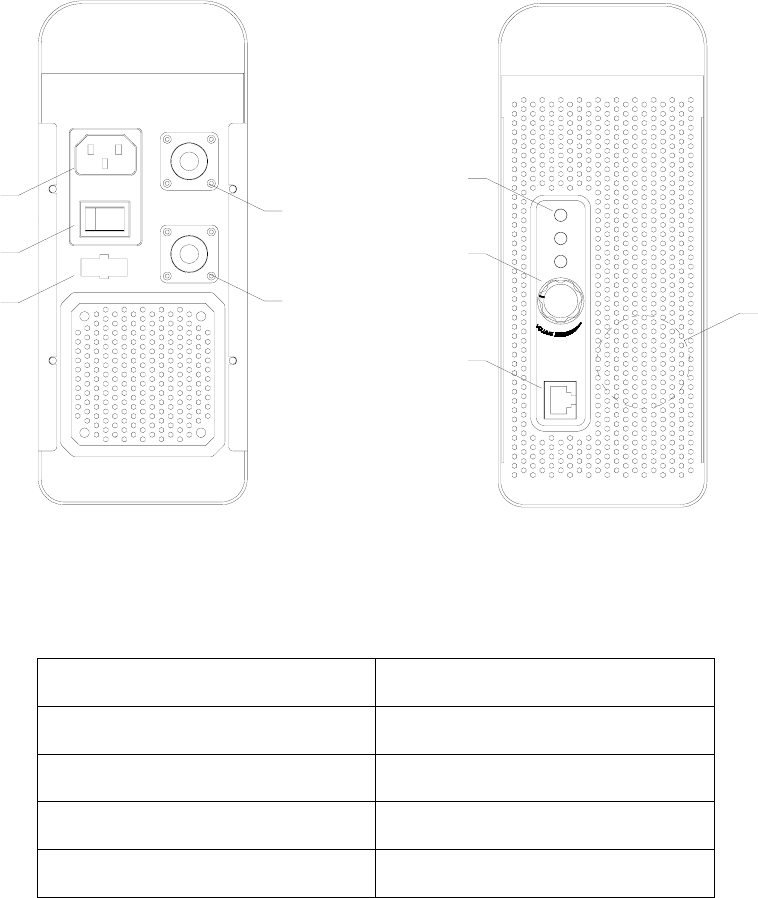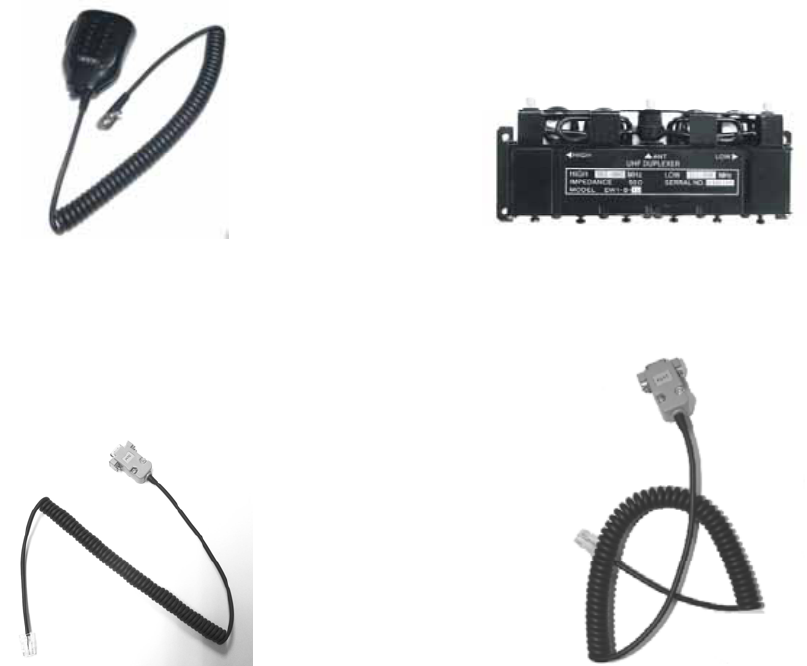HYT Science and Technology Co TR-50U PORTABLE REPEATER/TRANSCEIVER User Manual
Shenzhen HYT Science &Technology; Co Ltd PORTABLE REPEATER/TRANSCEIVER
Contents
- 1. Users Manual I
- 2. Users Manual II
- 3. Users Manual III
Users Manual III
1
THANK YOU!
Thank you for your purchase of HYT portable repeater. We believe this easy–to-use
repeater will provide you with clear and reliable communications at peak efficiency.
Read this manual carefully prior to operating your repeater.
2
Contents
User Safety, Training, and General Information
Compliance with RF Energy Exposure Standards
FCC Compliance
Precautions
Product Inspection
Radio Overview
Features and Operations
Basic Operations
Time-out-Timer (TOT)
CTCSS/DCS Signalling
Troubleshooting Guide
Care and Cleaning
Optional Accessories
3
User Safety, Training, and General Information
READ THIS IMPORTANT INFORMATION ON SAFE AND EFFICIENT OPERATION
BEFORE USING YOUR HYT PORTABLE REPEATER.
Compliance with RF Energy Exposure Standards
Your HYT portable repeater is designed and tested to comply with a number of national
and international standards and guidelines (listed below) regarding human exposure to
radio frequency electromagnetic energy. This repeater complies with the IEEE (FCC) and
ICNIRP exposure limits for occupational/controlled RF exposure environment at duty
cycles of up to 50% talk-50% listen and should be used for occupational use only. In terms
of measuring RF energy for compliance with the FCC exposure guidelines, your repeater
radiates measurable RF energy only while it is transmitting (during talking), not when it is
receiving (listening) or in standby mode.
Your HYT portable repeater complies with the following of RF energy exposure
standards and guidelines:
United States Federal Communications Commission, Code of Federal Regulations;
47CFR part 2 sub-part J
American National Standards Institute (ANSI)/Institute of Electrical and Electronic
Engineers (IEEE) C95. 1-1992
Institute of Electrical and Electronic Engineers (IEEE) C95. 1-1999 Edition
International Commission on Non-Ionizing Radiation Protection (ICNIRP) 1998
Operational Instructions and Training Guidelines
To ensure optimal performance and compliance with the occupational/controlled
environment RF energy exposure limits in the above standards and guidelines, users
should transmit no more than 50% of the time and always adhere to the following
procedures:

4
Transmit and Receive
To transmit (talk), push the Push-To-Talk (PTT) button of the optional microphone; to
receive, release the PTT button.
Approved Accessories
For a list of HYT approved accessories, see the accessories page of this user manual or
visit the following website which lists approved accessories: http://www.HYT.com.cn
5
FCC Compliance
Part 15 Compliance
This equipment has been tested and found to comply with the limits for a Class B digital
device, pursuant to part 15 of the FCC Rules. These limits are designed to provide
reasonable protection against harmful interference in a residential installation. This
equipment generates, uses and can radiate radio frequency energy and, if not installed
and used in accordance with the instructions, may cause harmful interference to radio
communications. However, there is no guarantee that interference will not occur in a
particular installation. If this equipment does cause harmful interference to radio or
television reception, which can be determined by turning the equipment off and on, the
user is encouraged to try to correct the interference by one or more of the following
measures:
Reorient or relocate the receiving antenna.
Increase the separation between the equipment and receiver.
Connect the equipment into an outlet on a circuit different from that to which the
receiver is connected.
Consult the dealer or an experienced radio/TV technician for help.
FCC Licensing Requirements
Your repeater must be properly licensed Federal Communications Commission prior to
use. Your HYT Wireless dealer can assist you in meeting these requirements. Your dealer
will program each repeater with your authorized frequencies, signaling codes, etc., and
will be there to meet your communications needs as your system expands.

6
Precautions
READ THIS IMPORTANT INFORMATION ON SAFE AND EFFICIENT OPERATION
BEFORE USING YOUR HYT PORTABLE REPEATER.
◇ This equipment should be serviced by qualified technicians only.
◇ Do not place the repeater in switchboard room or near high voltage facilities.
◇ Do not place the repeater in excessively dusty, inflammable or explosive
atmosphere.
◇ Do not expose the repeater to direct sunlight for a long time or place it close to a
heating source.
Safety: It is important that the operator is aware of and understands hazards
common to the operation of any repeater.
Product Inspection
Please carefully unpack the repeater. Before use, it is recommended that you inspect the
product as follows.
First check the shipping carton for any signs of damage. Confirm the supplied product
against the packing slip to assure accuracy. If any items are missing or have been
damaged during shipment, please file a claim to the carrier immediately.
Item Qty. (PCS)
AC Power Cord 1
DC Power Cord 1
Owner’s Manual 1
Operating Frequency Label 1
Connect DC Power Supply
Connect one end of the cord to the back-up battery or external DC power supply (12-15V
DC), and the other end to the DC power supply inlet of repeater.
Connect AC Power Supply
Insert the plug of AC power cord into external AC power socket, and the other end into the
AC power supply inlet of repeater.

7
Radio Overview
1. LED Indicator
LED Status
Glow red Power on
Glow green Receiving
Glow blue Transmitting
Flash green Power save
2. Power/Volume Control Knob
Rotate the Knob clockwise until a “click” sounds to switch the power on, red LED glows.
Turn the knob counterclockwise until a “click” sounds to switch the power off. When the
power is on, turn the knob to adjust the volume level. (Note: you are recommended to
adjust the volume to the minimum level when monitoring is not required.)
3. Speaker
4. RJ45 Programming I/O Port
Used by your dealer to program the repeater.
SCI/MIC
POWER
BUSY
Tx
Tx
Rx
DC 13.80V
LED Indicator
Power/Volume
Control Knob
Speaker
RJ45
Programming
I/O Port
Tx Antenna
Connector
Rx Antenna
Connector
DC Power Inlet
AC Power Inlet
AC Power Switch
8
5. Rx Antenna Connector
N/F type RF connector.
6. Tx Antenna Connector
N/F type RF connector can be used independently for both Tx and Rx antenna port when
duplexer is installed.
7. AC Power Inlet
Connect the AC power cord properly and switch the power on to enter AC power supply
mode.
8. AC Power Switch
9. DC Power Inlet
In AC power supply mode, DC floating charging feature is available if connected with
back-up battery; When AC power is switched off, it will auto-revert to DC power supply
mode.
Features and Operations
Basic Operations
1. Switch the AC power on: properly connect the AC power cord and then switch the
power on.
2. Turn the repeater on: rotate the Power/Volume Control Knob clockwise until a click
sounds to turn the repeater on, LED glows red.
3. Enter Repeater Mode: turn on the repeater to enter standby mode. Transmitter and
receiver LED glow simultaneously when a valid signal is detected.
4. Adjust the volume: rotate the Power/Volume Control Knob in Repeater Mode. Adjust
the volume to the minimum level when monitoring is not needed.
Time-out-Timer (TOT)
Time-out-Timer is used to prevent one from using the same channel for a long time and to
prevent the transmitter from damage due to continuous transmission. If the transmission
exceeds the preset time (it’s set by your dealer, max. time is 10 minutes), transmission will
be forbidden. Release the [PTT] key and press it again to resume transmitting.
9
CTCSS/DCS Signalling
CTCSS/DCS may have been programmed on a channel to ignore unwanted calls from
other parties on the same channel.
When CTCSS/DCS signalling is set, the user can only receive calls from other parties
which are using the same CTCSS/DCS signalling on the same channel within
communication range; otherwise, the user receives all the calls on the same channel
within communication range.
CTCSS/DCS signalling can be preset by your dealer.
Note: Although using CTCSS/CDCSS enables you to avoid hearing unwanted calls, it
doesn’t mean all your calls will be private.

10
Troubleshooting Guide
Trouble Solution
Fail to turn the repeater on Check if the AC/DC power supply cord is
properly connected, or the AC switch fuse
is blown.
Make sure you are using the same
frequency and CTCSS/DCS as the
repeater.
Can’t talk to or hear group members
Make sure you are within the coverage of
repeater.
Other voices (Non-group members) appear
on the channel
Change CTCSS/DCS of the repeater.
Make sure all the radios of your group
are changed to the same signaling.
Care and Cleaning
◇ Place the repeater in dry, ventilated and waterproof indoor environment;
◇ Clean the repeater shell with wet cloth or neutral detergent.

11
Optional Accessories
Remote Speaker Microphone SM-06R Duplexer MO-DUP1
Transmitter Programming Cable PL-R50E2 Receiver Programming Cable PL-R50E3
HYT endeavors to achieve the accuracy and completeness of this manual, but cannot
guarantee its accuracy at all times. All the above specifications and design are subject to
changes by HYT without prior notice.
All the reproduction and translation of this manual without authorization of HYT is not
allowed.